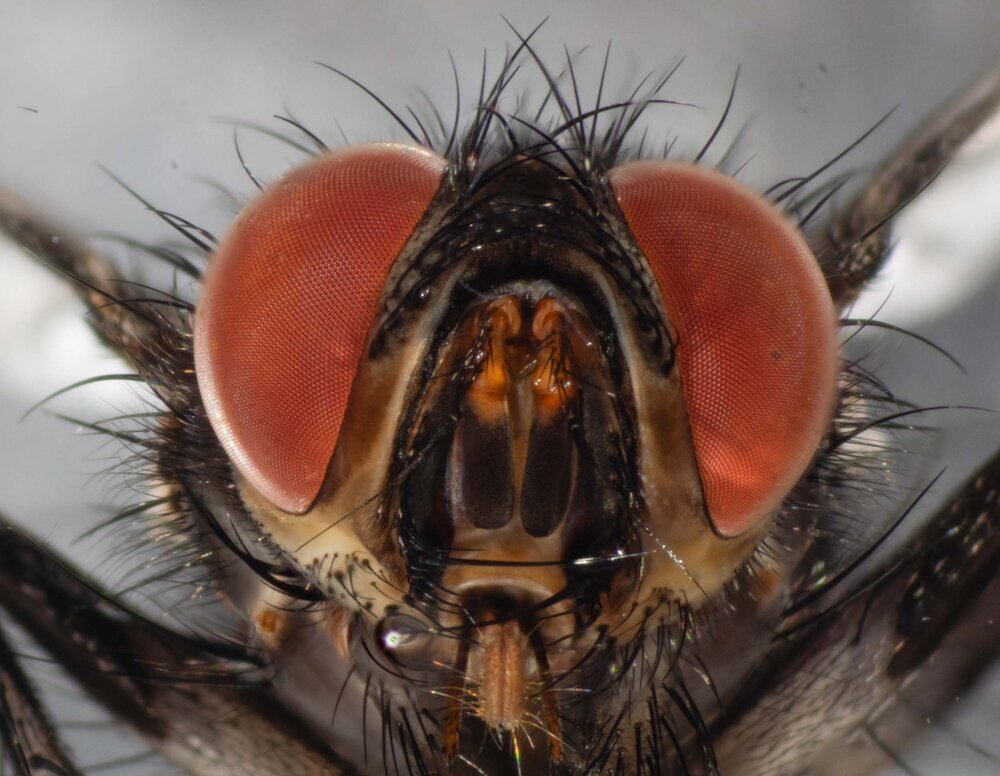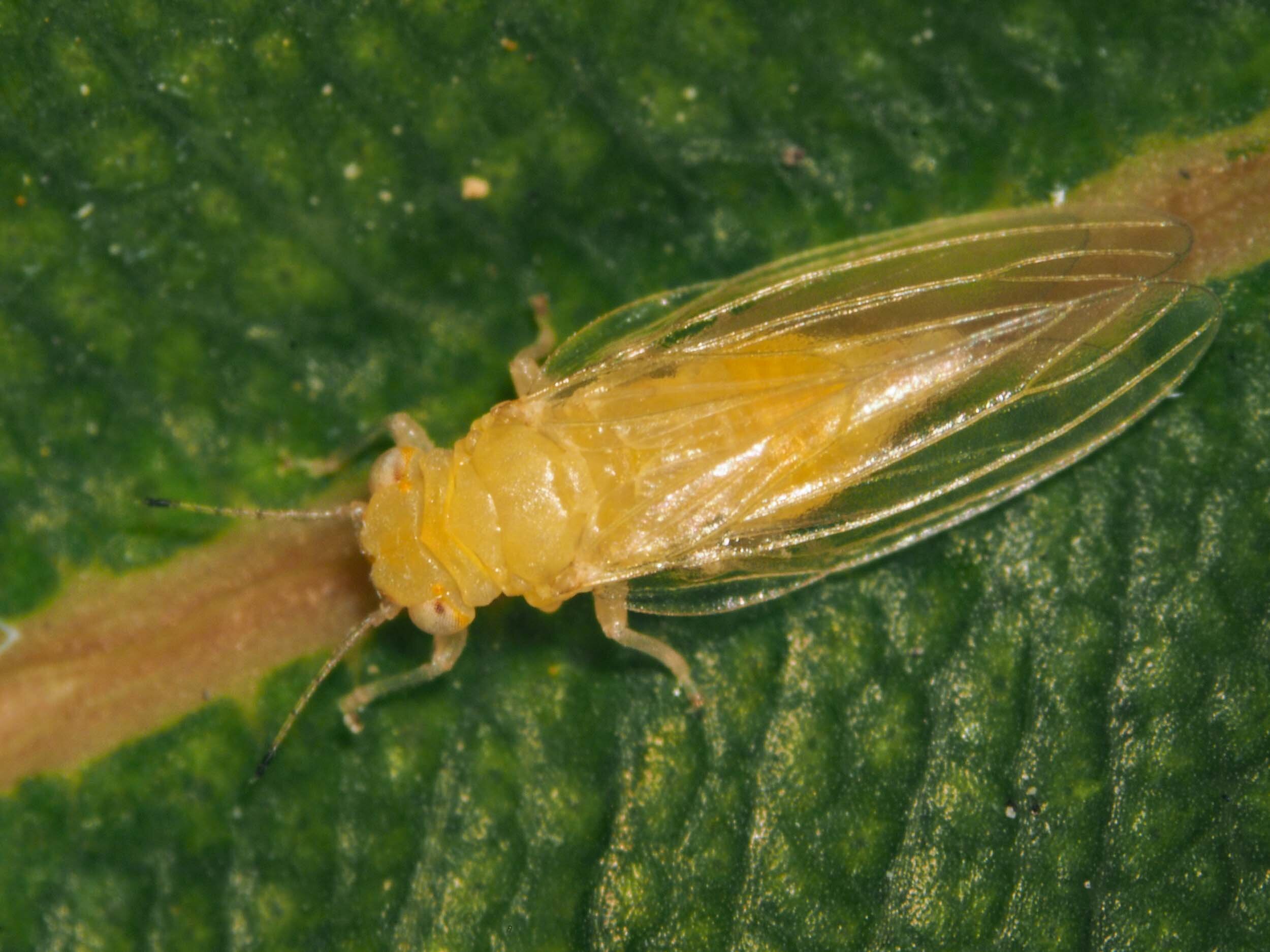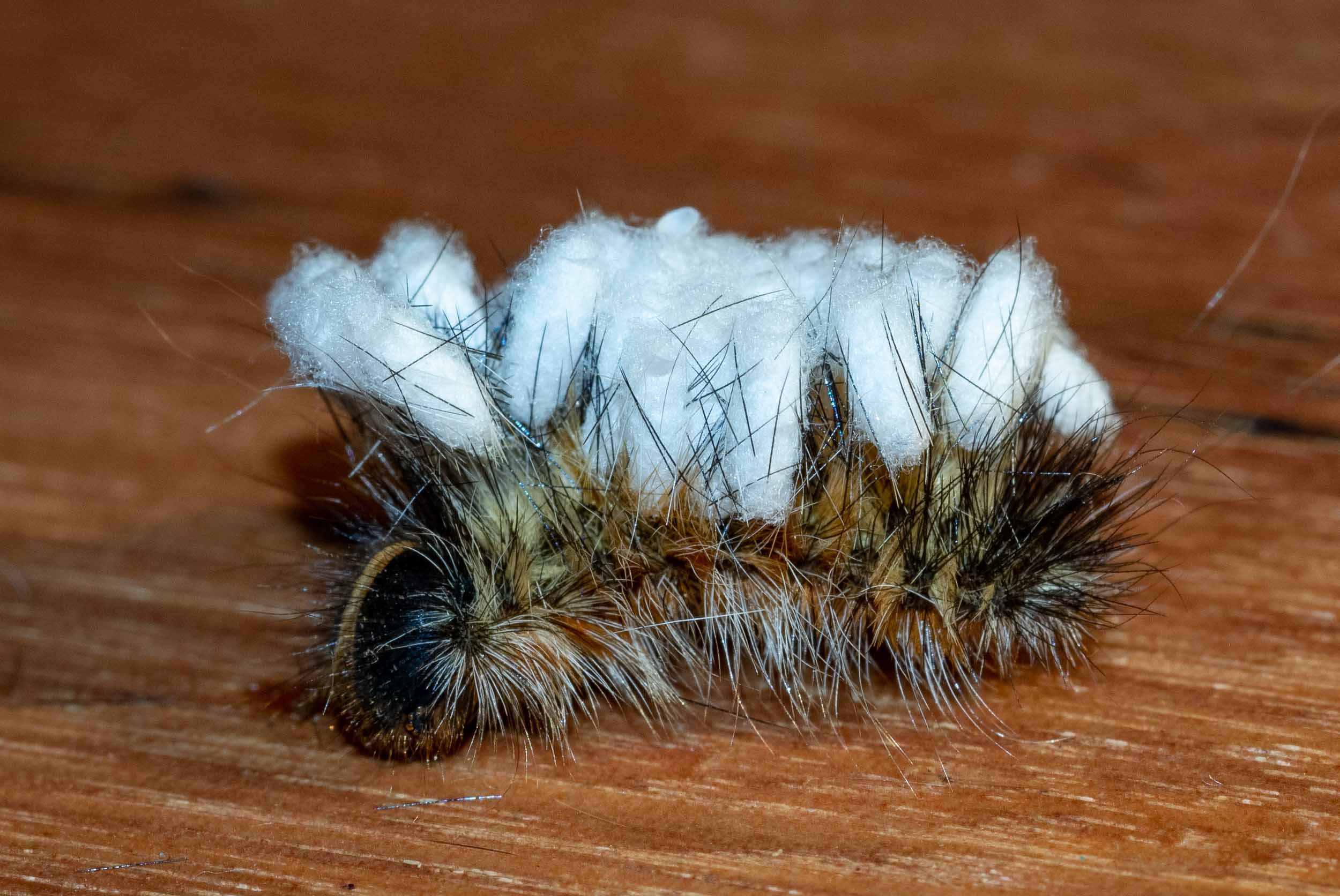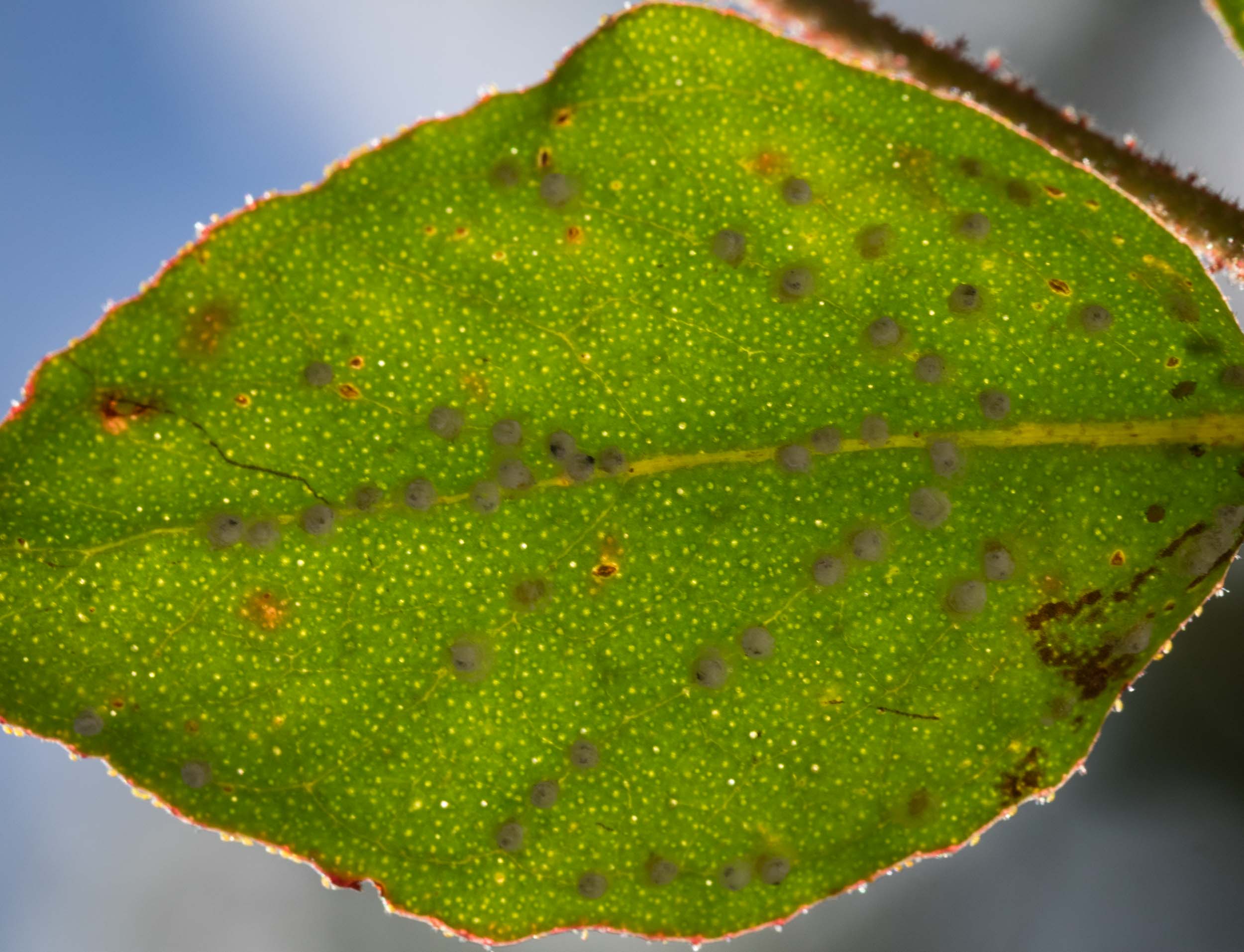Déjà vu! Another egg parasitoid wasp
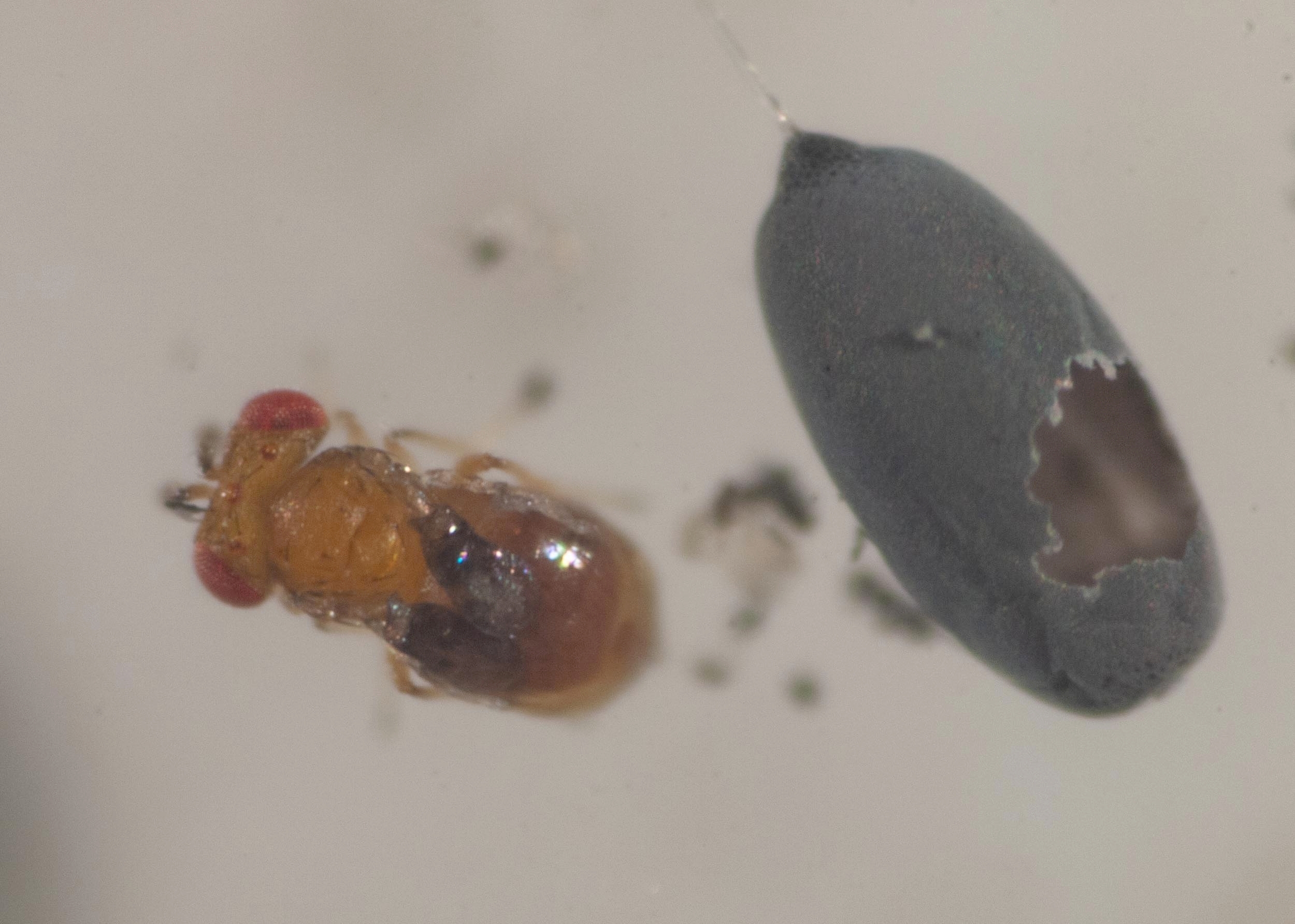
A couple of weeks ago, I reported on the ingenious reproductive strategy used by the Telenomus wasp. It lays its eggs inside the eggs of the Common Brown butterfly (Heteronympha merope), thereby allowing its developing young to grow at the expense of the butterfly embryo.
While I discovered then that egg parasitism is a trick used by many different types of wasps, I didn't expect to come across another example of it quite so soon.
Parasitised lacewing eggs
Just a few days ago I found a clutch of lacewing eggs on the surface of a piece of fabric that is stored outside. These were arranged in the characteristic fashion for this insect group - each egg located at the end of a long silken stalk. (See my earlier post about lacewing development).
However, something was amiss with these eggs - many were grey rather than their normal white colour.
Here is a closer look at two of these grey lacewing eggs. Each is about 1mm long. Their slightly crumpled look contrasts with the plump appearance of normal lacewing eggs.
I peeled away the chorion from one egg and discovered the cause of their abnormal colour and texture.
Inside was a black object that looked suspiciously like the moulted cuticle of an insect larva - definitely not a lacewing embryo!
The identity of the egg parasite
Further dissection revealed that inside this black case lay an insect pupa of some description. It looked like a wasp pupa, but confirmation would have to wait until the contents of the remaining lacewing eggs emerged.
I didn't have to wait long! Just four days later, I saw a hole in one of the lacewing eggs. Impatience got the better of me, so I started to peel away the chorion to see what was inside.
I got a bit of a shock when the contents suddenly emerged all by itself!
Yes, this looked like a wasp - albeit a very different creature to the black Telenomus wasp, the parasite I had discovered inside the Common Brown butterfly egg.
After emerging, it rested for a while on top of its former residence, its wings still folded up in a small "travel pack".
Just a quarter of an hour later, it was clambering over some of the other, as yet unhatched lacewing eggs.
It stopped on a particular egg, in which a small hole had appeared.
As I watched, that hole got larger and larger, until the head of another wasp started to emerge.
The emerging wasp enlarged its hole by biting off and discarding pieces of the chorion.
The egg contained only a single wasp.
The original wasp, sitting directly over the hole, was clearly as fascinated with the proceedings as I was! Its antennae and hindlegs vibrated with excitement and at times it reached out to touch the eye of the emerging wasp with a foreleg.
As soon as the wasp had fully emerged from the lacewing egg, the reason for the close attention of the spectator (wasp) became evident - it immediately attempted to mate with it. It took only a minute to succeed in this endeavour, at which point it departed the scene.
So it was now clear that the first wasp to emerge had been a male. Its first goal in life had been to find and mate with a female. The female in question had only just entered the outside world herself.
Unpacking wings
Only after this high priority task had been discharged did the wasps deal with other issues - such as unpacking the wings. When the wings form during the pupal stage, they are tightlypacked into small parcels, covered by a thin layer of cuticle. This cuticular covering must be removed and the wings unfolded before the wasp can fly.
The following video shows a newly eclosed female wasp carrying out this unpacking job - all done using the hindlegs swung over the top of the abdomen! I never cease to be amazed at the sophistication and complexity of behaviour shown by small insects like this - right from the get-go!
Wasp fashion gallery
Once the wasps had made themselves presentable, I set about taking detailed photographs of them. Here is a selection...
These are seriously tiny creatures. The males are less than 0.5mm, the females just slightly larger. They count amongst the smallest insects known.
To give you a better idea of its size, I've photographed a female next to a match head.
Wasps continued to emerge from my clutch of lacewing eggs over a period of several days. So I presume that this clutch had been parasitised on several different occasions.
Who are my wasps and what are they good for?
I was able to place my babies in the genus Trichogramma quite quickly. This wasp is the most widely used biological control agent in the world, according to a Wikipedia entry. Over 1,000 scientific papers have been published on Trichogramma! So there is no dearth of information about it.
While Trichogramma is known to parasitise a wide range of insect species, I am not aware of any previous reports of it targetting lacewing eggs. There is a touch of irony here: a biocontrol agent (a parasitic wasp) attacking another biocontrol agent (a lacewing). Ecology doesn't necessarily work for the interests of humans.
Finding the genus of my wasp was easy. Working out the species took a good deal more work. I'm now pretty confident this is Trichogramma funiculatum, an Australian endemic species first described by Mary Carver in 1978 (Journal of Australian Entomological Society 17: 109-112). The body colour, segmentation of the antennae and length of wing setae are some of the features consistent with this identity.
A closely related endemic species, Trichogramma carverae has been shown to have excellent potential for control of the Light Brown Apple Moth (Glenn and Hoffmann, 1997, Journal of Economic Entomology 90: 370-382). The caterpillars of this moth are a pest on grape vines.
However, even if Trichogramma were completely useless as a biocontrol agent, I'd still find them fascinating!









